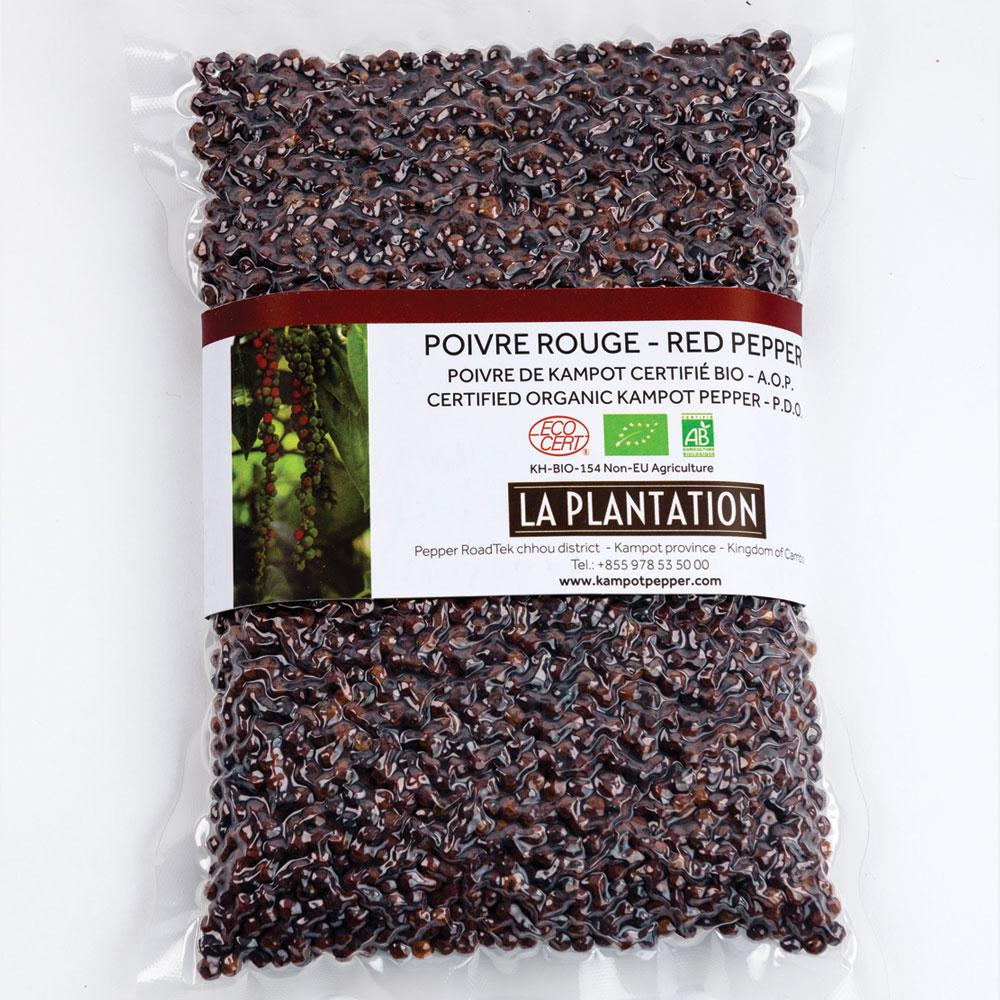On expansive farms in the green hills outside Kampot, Cambodia, are long green vines wrapped like snakes around 12-foot high brick towers and bamboo poles. Dotted along the bright green vines are small fruits – peppercorns – one of Cambodia’s finest export crops. The pepper farms of Kampot produce pepper which has been cultivated for centuries, with different varieties and complex tastes, and is often considered the world’s best pepper.
On the southern coast of Cambodia is the city of Kampot, a sun-baked town of French colonial architecture, flowering trees, sleepy tuk tuk drivers and colourful Chinese shophouses. The Kampot old town is a UNESCO World Hertitage site candidate, a sleepy network of dusty streets with a low-key colonial charm.
Outside the city, rice paddies stretch along red mud roads, bright green shoots emerging from the flooded fields that mirror the sky above. Kids wave and laugh at passers-by, jumping with a great splash into the water as distant buffalo watch in an absent stupor, tails flicking and teeth chewing. While rice is grown everywhere in Kampot province, the real star of the show is Kampot Pepper.
What Is Kampot Pepper, And Why Is It So Special?
Kampot Pepper was called “the tabletop standard for all France” by the late Anthony Bourdain. Time magazine quoted “There’s pepper, and then there’s Kampot pepper.” But why is this particular pepper so special? There are certain taste qualities beyond just spicy heat that make Kampot pepper unique, according to Nathalie Chaboche, a French pepper producer based in Kampot. Her full interview can be found here.
There are three main varieties of peppercorns that Kampot produces, which come from the same plant. Black pepper is the most recognisable peppercorn type, that many people have in their households. Black pepper is harvested from an unripe, green pepper drupe (a fleshy fruit with a central stone/seed). They are cooked briefly in hot water, which cleans then, then dried out, giving the peppercorn its black colour. The black pepper is a mild spice, with a pleasant aftertaste. Biting one will produce a slight citrus and mint aftertaste, and is best served with red meat.
Red pepper is made from fully mature, ripe peppercorn drupes. Chaboche describes the taste as having a sweetness, a fruitiness, and a hint of tobacco. Due to its sweetness, it can even go well with desserts or salads.
White pepper is harvested from ripe fruit of the pepper plant, and has a milder flavour. To make white pepper, the skin is removed which leaves just the ‘kernel’ of the peppercorn, giving it an aroma of herbs, or anise. White pepper is best used for fish.
Indeed, Kampot pepper earned the honour of having a Protected Geographic Indication (PGI) in 2016, which designates pepper from this region to be protected (just like Champagne, from the Champagne region). What’s more, only farms certified by the Kampot Pepper Producers Association (KPPA) can sell produce with the Kampot Pepper designation. It helps Kampot pepper stay distinctly superior, especially as cheaper alternatives from Vietnam have arisen in recent years.
Part of the reason why Kampot pepper is so highly regarded for its taste if because of the climate. Kampot, sandwiched between the Elephant Mountains and the sea, has a high annual rainfall, lots of sun, and nutrient-rich soils that contain high levels of quartz. Pepper growing techniques on Kampot pepper farms date back to the 13th century.
READ FULL ARTICLE: STCKY MANGO RICE

